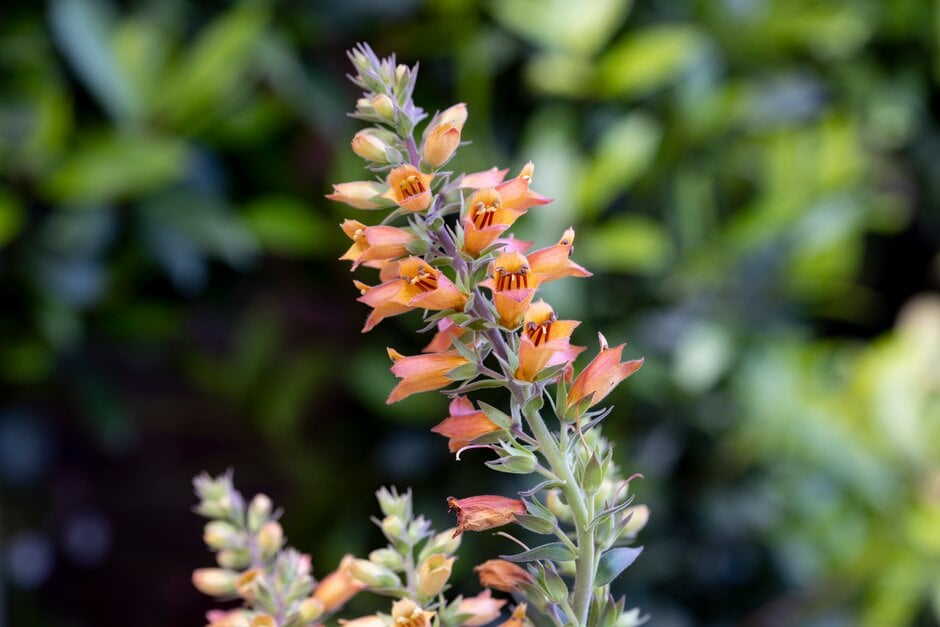Digitalis × valinii 'Firecracker'
foxglove 'Firecracker'
An upright perennial sometimes grown as an annual, reaching up to 80cm high in flower, with lance-shaped, dark green leaves forming a mound at the base. Upright spikes bearing outward-facing, bell-shaped flowers, rich orange on the outside and paler yellow-orange in the throats, are produced over a long season from late spring to late summer

Buy this plant
Size
Ultimate height
0.5–1 metresTime to ultimate height
1–2 yearsUltimate spread
0.1–0.5 metresGrowing conditions
Moisture
Moist but well–drained, Well–drainedpH
Acid, Alkaline, NeutralColour & scent
| Stem | Flower | Foliage | Fruit | |
| Spring | Orange Yellow | Green | ||
|---|---|---|---|---|
| Summer | Orange Yellow | Green | ||
| Autumn | Green | |||
| Winter |
Position
- Full sun
- Partial shade
Aspect
South–facing or West–facing
Exposure
Exposed or Sheltered Hardiness
H4Botanical details
- Family
- Plantaginaceae
- Native to GB / Ireland
- No
- Foliage
- Deciduous
- Habit
- Bushy, Columnar upright
- Potentially harmful
- TOXIC if eaten. Wear gloves and other protective equipment when handling TOXIC to pets - see the HTA guide to potentially harmful plants for further information and useful contact numbers
- Genus
Digitalis can be biennials or usually short-lived perennials forming a rosette of simple leaves with bell-shaped flowers in slender, erect, usually one-sided racemes
- Name status
Accepted
How to grow
Cultivation
Will grow in almost any soil or situation except very wet or very dry; ideally a sheltered, warm site with humus-rich soil in light or partial shade. Needs protection from hard frosts and excess winter wet. May be short-lived for a perennial. See foxglove cultivation for more detailed advice
Propagation
Propagate by division in early spring
Suggested planting locations and garden types
- Coastal
- Cottage and informal garden
- Patio and container plants
- Wildflower meadow
- Wildlife gardens
- Cut flowers
- Flower borders and beds
Pruning
Deadhead to encourage more flowers
Pests
May be susceptible to aphids, leaf and bud eelworms, slugs and snails
Diseases
May be susceptible to powdery mildews, downy mildews and leaf spot
Love gardening
Sign up to receive regular gardening tips, inspiration, offers and more
View our Privacy Policy
Get involved
The Royal Horticultural Society is the UK’s leading gardening charity. We aim to enrich everyone’s life through plants, and make the UK a greener and more beautiful place.